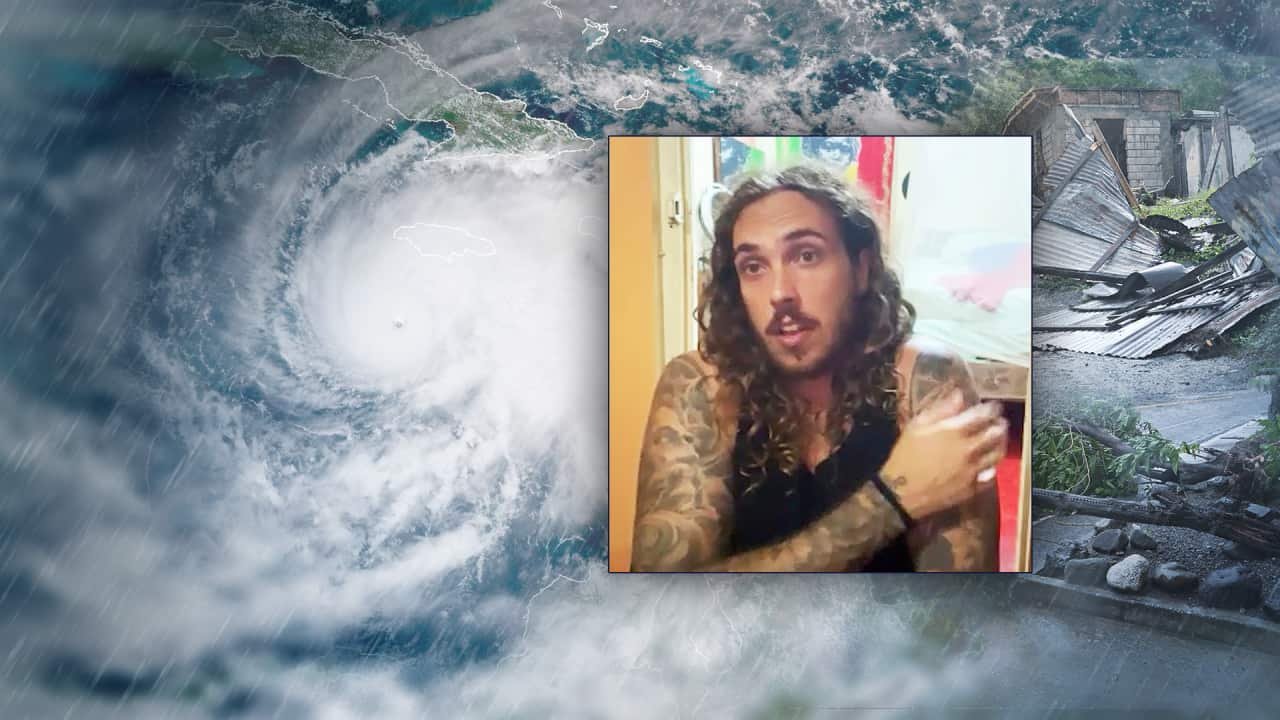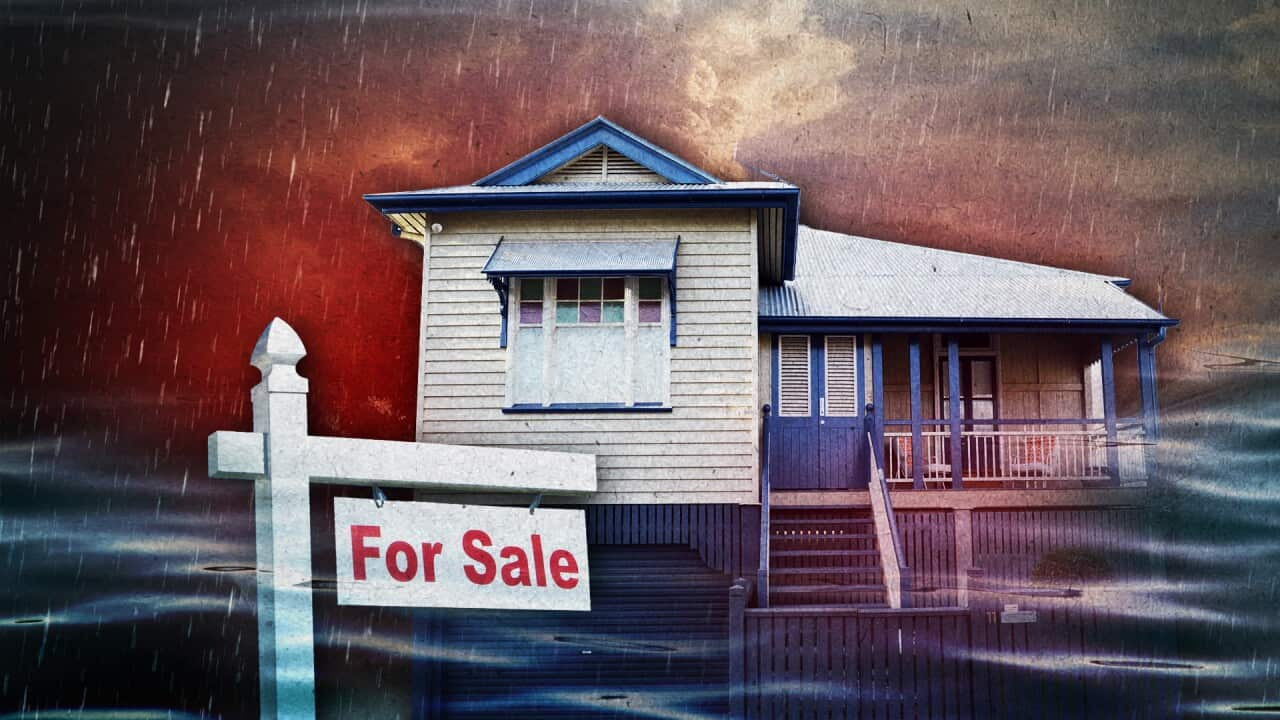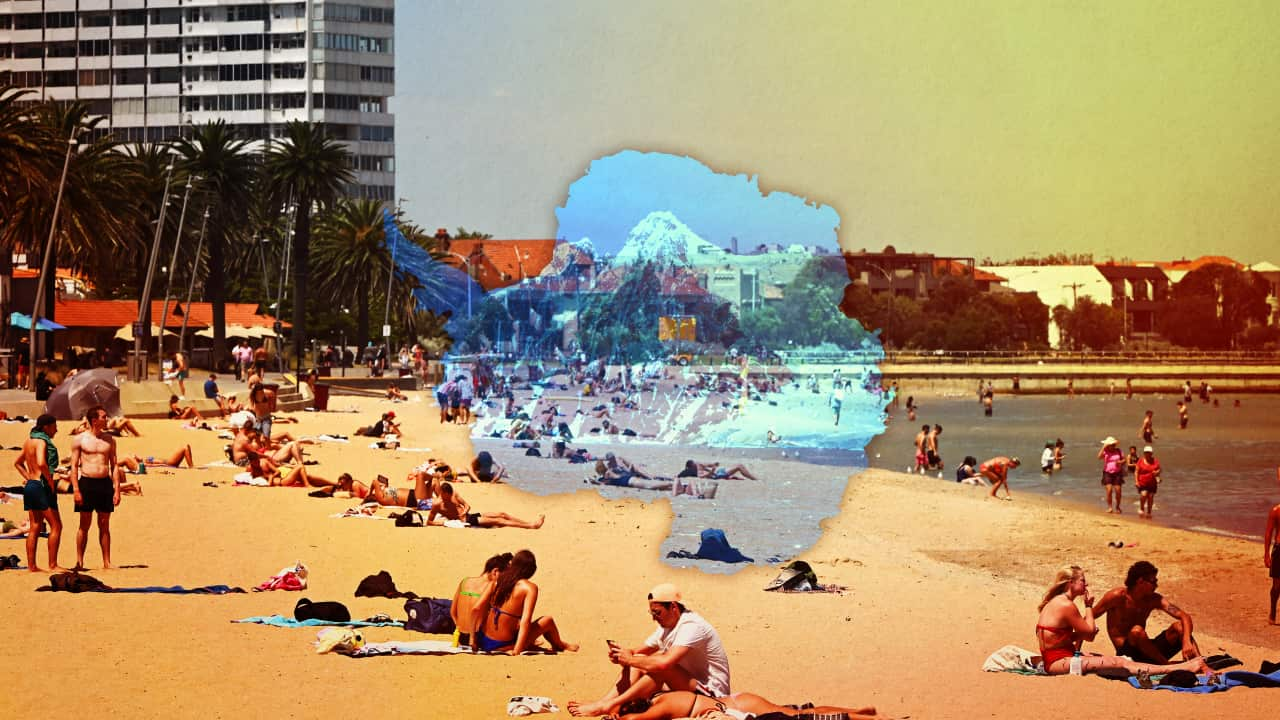Key Points
- Hurricane Melissa has made landfall in Jamaica and is the country's worst storm on record.
- The storm is expected to travel to Cuba.
- Hurricane Melissa has caused extensive damage in some parts of Jamaica but didn't hit Kingston as hard as expected.
As one of the country's strongest storms on record causes havoc in Jamaica, an Australian student living in the Caribbean nation said he spent a sleepless night during Hurricane Melissa fearing the iron roof of his home might be torn away.
Originally from Queensland's Sunshine Coast, Samuel Zinzan Ziff, who is studying filmmaking and cinematography in the Jamaican capital, Kingston, told SBS News on Tuesday: "Last night I pretty much had to tie myself to my bed just in case the roof fell off. It was really scary."
Ziff said he is exhausted, with his power cutting in and out, and his access to running water lost several hours ago.
"It is quite stressful, honestly. But then again, I'm just grateful to be where I'm at because, honestly, I could have, from my situation, I could have been without power, I could have been, you know, the roof ripped off the top of me," he said.
He said the hurricane intensified so quickly that the community struggled to gauge its severity.
"We've pretty much just been trying to get lots of canned foods, lots of big water supplies, for washing, bathing and drinking water, nonperishable goods and just power banks and stuff," Ziff said.
"It's hard, you don't really know. Some people are anxious, some are prepared, some people sort of aren't really."
The worst storm to strike Jamaica
Hurricane Melissa has ripped a path of destruction through Jamaica after making landfall as one of the most powerful hurricanes on record and the worst to ever strike the Caribbean nation.
It made landfall with wind speeds even more potent than those of recent history's most brutal storms, including 2005's Katrina, which ravaged the city of New Orleans in the United States.
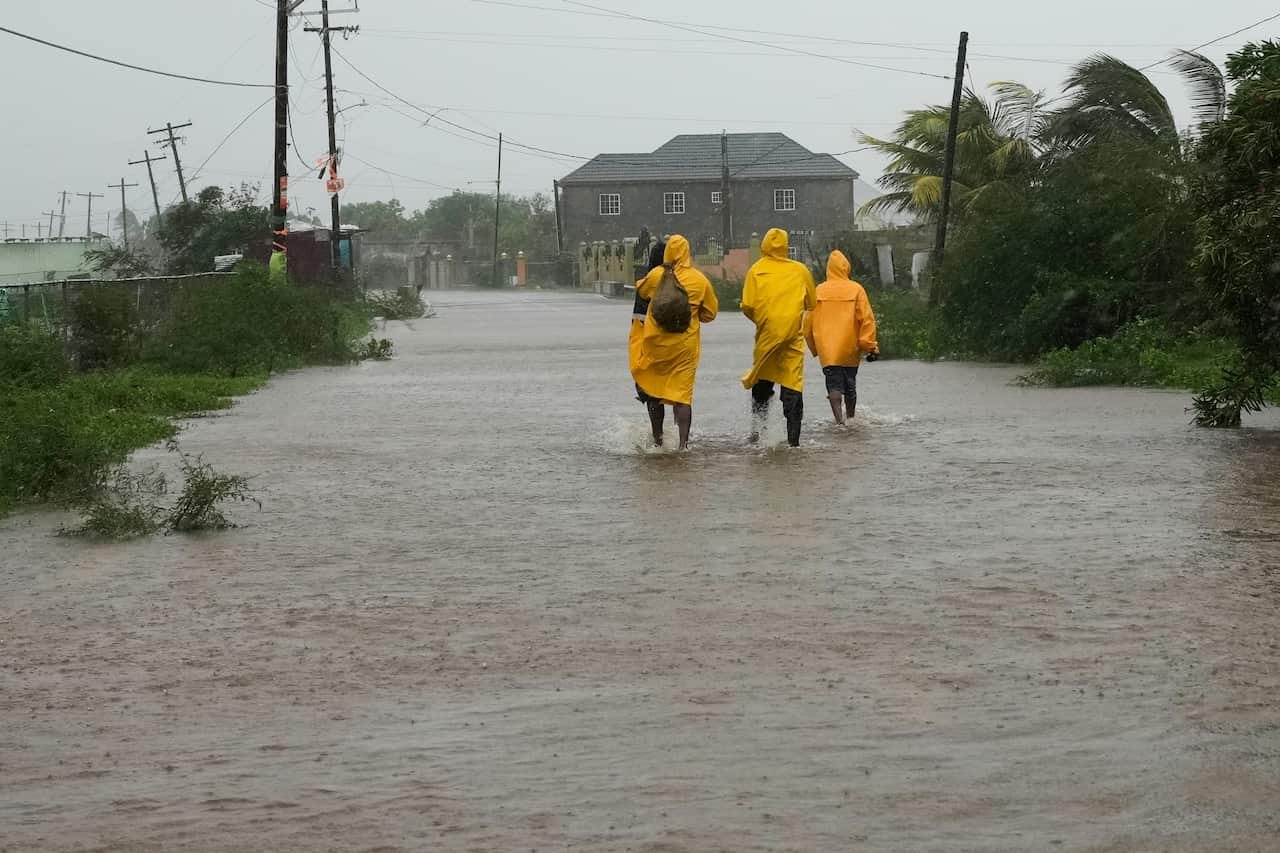
Jamaican Prime Minister Andrew Holness has declared the island a "disaster area". Source: AAP / Matias Delacroix/AP
The slow-moving storm took hours to cross the island nation, dropping to a category 3 storm by Tuesday evening, down from the top level of 5.
Jamaican Prime Minister Andrew Holness declared the island a "disaster area" and authorities warned residents to remain sheltered over continued flooding and landslide risks, as dangerous weather persisted even as the hurricane's worst moved on.
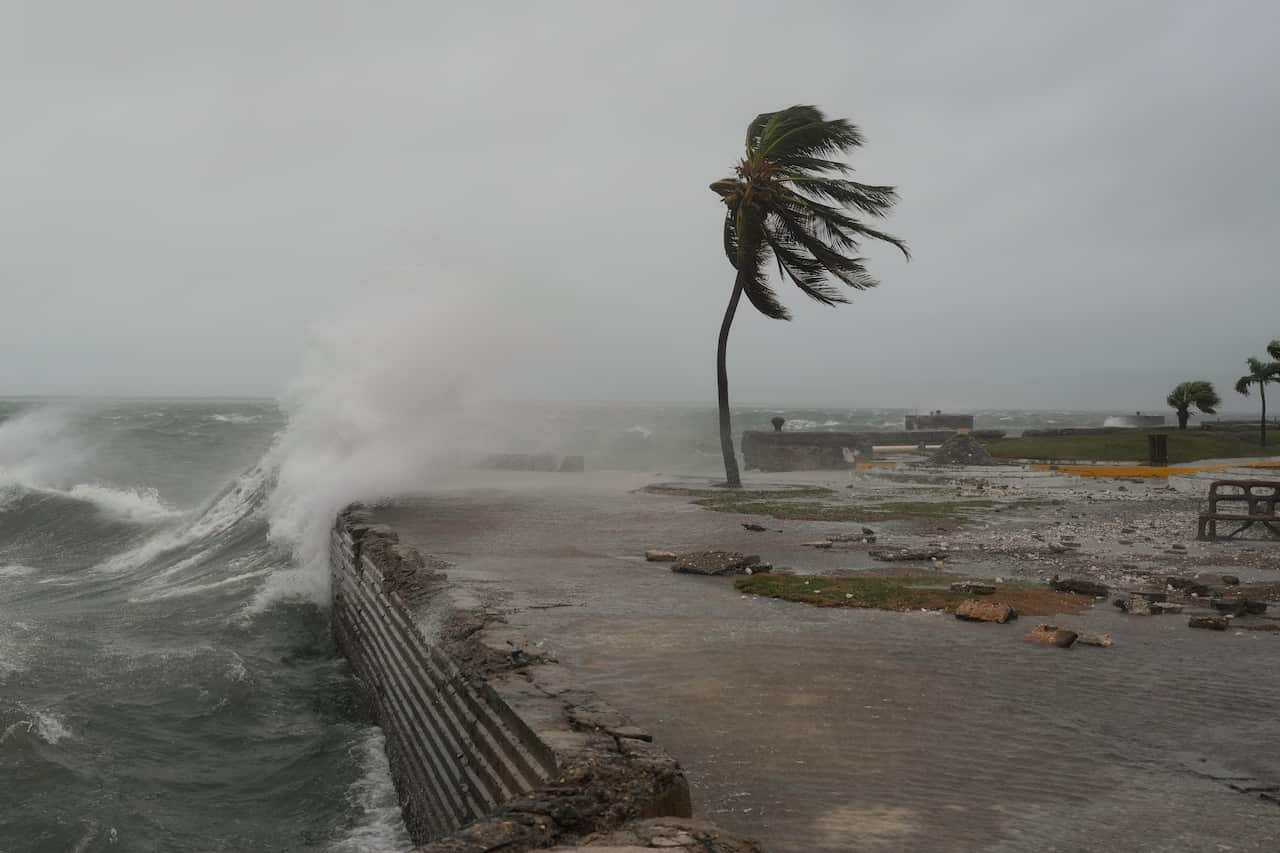
The still-powerful Melissa is set to hit Cuba as early as Wednesday night. Source: AAP / Matias Delacroix/AP
"We've just had a pretty heavy rain and a consistent wind, but it hasn't been the catastrophic part. I think if you go to central Jamaica — places like Santa Cruz, [Saint] Elizabeth, Manchester, Mandeville, those areas, it got absolutely hammered," he said.
Government minister Desmond McKenzie said several hospitals had been damaged, including in the hard-hit south-western district of Saint Elizabeth, a coastal area he said was "underwater".
"The damage to Saint Elizabeth is extensive, based on what we have seen," he told a briefing.
"Saint Elizabeth is the breadbasket of the country, and that has taken a beating. The entire Jamaica has felt the brunt of Melissa."
While the storm was originally predicted to hit Kingston directly, Ziff said it changed course — but the hours of anticipating the full brunt of the storm were stressful.
"We were told that Kingston's just going to be unrecognisable, everyone's going to be punished, it's going to be turned upside down pretty much. But we've been quite lucky considering the rest of Jamaica," he said.
The scale of Melissa's damage in Jamaica is not yet clear, as a comprehensive assessment could take days and much of the island was still without power, with communications networks badly disrupted.
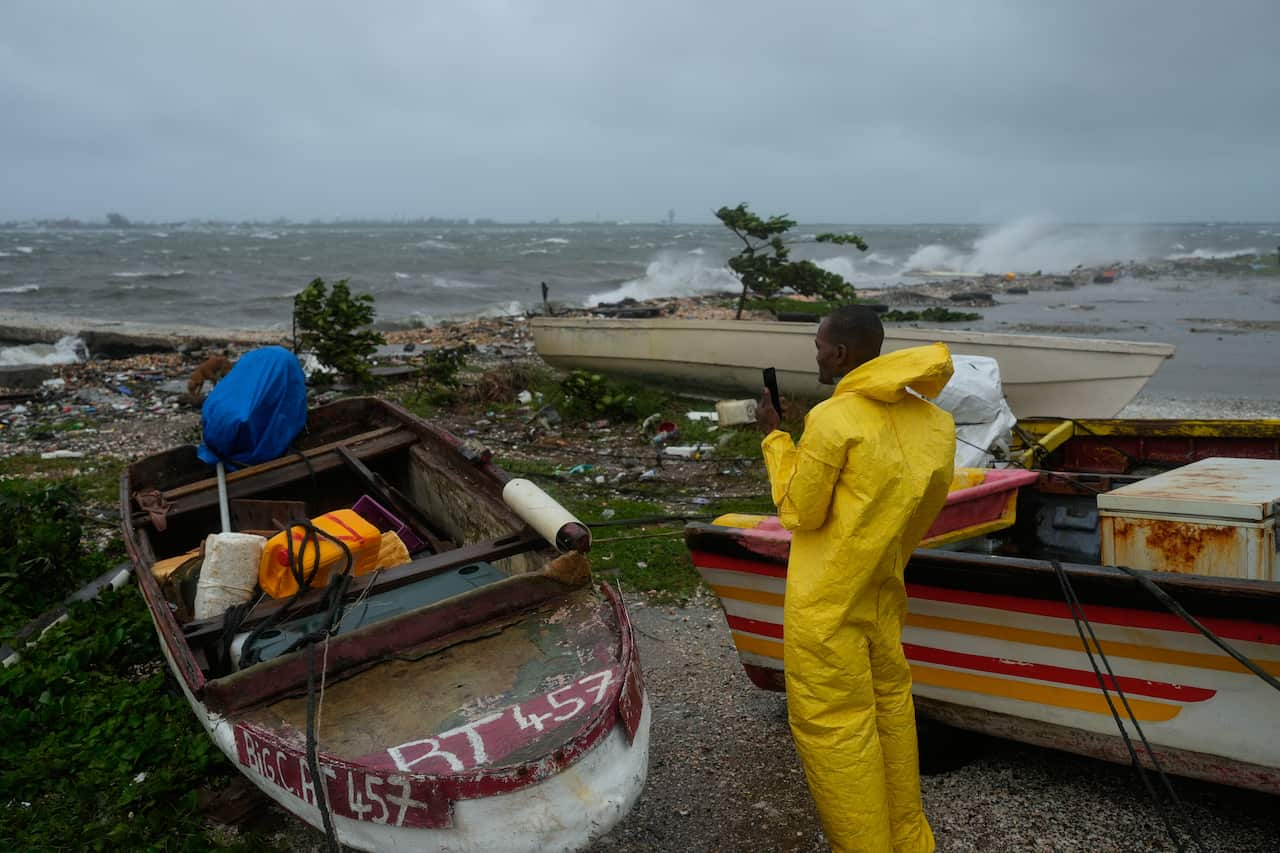
Authorities in Jamaica have said the scale of Melissa's damage is not yet clear, as a comprehensive assessment could take days. Source: AAP / Matias Delacroix/AP
"I'm not actually getting anything personally, so I'm just trying to maintain communication with my family back home and my friends," he said.
The still-powerful Melissa is set to hit Cuba as early as Wednesday night, where heavy rainfall, flash flooding and landslides are expected, and then the Bahamas.
The United Nations' World Food Programme said it is coordinating a sea-lift operation from Barbados to Jamaica carrying around 2,000 relief kits as soon as weather conditions allow.
Assistance is also planned for other impacted countries, including Cuba and Haiti, UN spokesperson Stéphane Dujarric told journalists.
Stronger and faster storms
Professor Steven Sherwood from the Climate Change Research Centre at the University of New South Wales told SBS News that while category 5 storms are rare, there is evidence they are becoming more severe due to climate change.
"It's hard to exactly compare storm strengths today with what they were, let's say 30 or 40 years ago, but it kind of looks like the strongest storms are getting stronger. And they also seem to be intensifying faster," he said.
As the atmosphere becomes warmer, it can hold more moisture, and as storms move across warm oceans, they can rapidly intensify by drawing in more water vapour and heat.
A 2023 study found that the likelihood of tropical cyclones in the Atlantic intensifying from category 1 to a major storm more than doubled from 1971 to 2020.
Hurricanes, cyclones and typhoons describe the same weather events in different parts of the world.
Over the last 40 years, the ocean has absorbed around 90 per cent of the warming caused by heat-trapping greenhouse gas emissions, with much of this heat stored near the surface. This additional heat intensifies a storm and powers strong winds.
Sherwood said storms in a warmer climate will be able to hold and dump more rain when they make landfall.
"I think rain and flooding is a definite hazard going into the future," he said.
Sherwood said storms are forming across the globe in regions where they have not historically occurred.
"For example, the first sighting of a tropical cyclone off of South American happened some years back. And in the Pacific, I think that's where it's been most evident that storms are starting to form further away from the equator," he said.
This means Australia's east coast may be more frequently battered by strong cyclones, Sherwood warned.
Earlier this year, Tropical Cyclone Alfred was downgraded upon making landfall but brought torrential rains, flooding and powerful winds to Queensland and northern NSW.
Asked if Australia would ever see stronger storms like Melissa, Sherwood said he wasn't "going to predict a category 5".
— With additional reporting by Reuters.
Share
